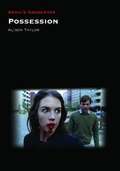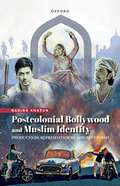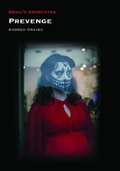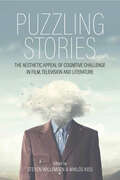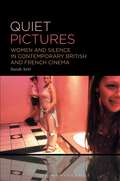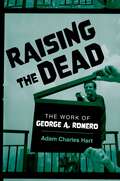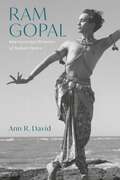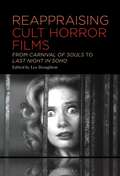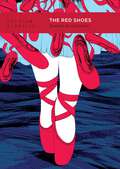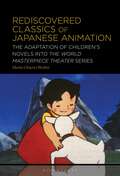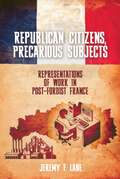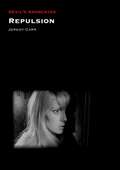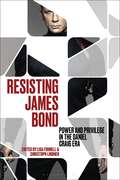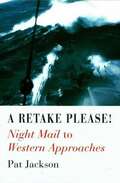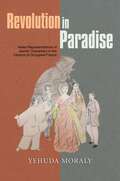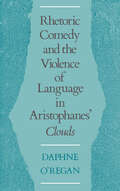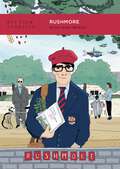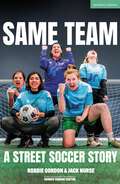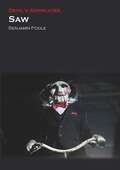- Table View
- List View
Possession (Devil's Advocates)
by Alison TaylorPremiering at the 1981 Cannes Film Festival, Andrzej Żuławski’s Possession remains a distinct phenomenon. Though in competition for the illustrious Palme d’Or, its art cinema context did not rescue it from being banned as part of the United Kingdom’s ‘video nasties’ campaign, alongside unashamedly lowbrow titles such as Faces of Death and Zombie Flesh Eaters. Skirting the boundary between art and exploitation, body horror and cerebral reverie, relationship drama and political statement, Possession is a truly astonishing film. Part visceral horror, part surreal experiment, part gothic romance dressed in the iconography of a spy thriller: there is no doubt that the polarity evinced by Possession’s initial release was in part a product of its resistance to clear categorisation.With a production history almost as bizarre as the film itself, a cult following gained with its VHS release, and being re-appreciated in the decades since as a valuable work of auteur cinema, the story of how this film came to be is as fascinating as it is unfathomable. Alison Taylor’s Devil’s Advocate considers Possession’s history, stylistic achievement, and legacy as an enduring and unique work of horror cinema. Beginning with a marital breakdown and ending with an apocalypse, the film’s strangeness has not dissipated over time; its transgressive imagery, histrionic performances, and spiral staircase logic remain affective and confounding to critics and fans alike. Respecting the film’s wilfully enigmatic nature, this book helps to unpack its key threads, including the collision between the banal and the horrific, the socio-historical context of its divided Berlin setting, and the significance of its legacy, particularly with regard to the contemporary trend for extreme art horror on the festival circuit.
Postcolonial Bollywood and Muslim Identity: Production, Representation, and Reception
by Dr Nadira KhatunThe book joins a growing scholarship in the field of Bollywood film studies, encompassing methodological sub-groups such as discursive or narrative studies, textual analysis, audience research, and the political economy of Bollywood. It particularly focuses on the representation of Muslims in postcolonial Bollywood cinema that draws upon earlier questions and concerns about narrative style and the politics of representing Muslims. It also includes issues concerning Muslim film genres and the chronological shift in the portrayal of Muslims that is contingent upon national politics. In Bollywood cinema, Muslims have traditionally been portrayed through the lens of religion. Narratives associated with that specific religious identity have been adapted, based on the socio-political setting of the country at the time of the film's making. The study, thus, adds to scholarship on 'representation' in popular Hindi cinema.
Prevenge (Devil's Advocates)
by Andrew GravesPrevenge (2016) is an entertainingly dark 21st-century horror movie detailing the serial killing journey of heavily pregnant Ruth. It’s a cleverly crafted narrative full of stark social commentary, traversing the delicate line between comedy and tragedy by fusing together a kitchen sink approach with a supernatural revenge plot. This book, as part of the Devil’s Advocates series, examines how the film deconstructs the slasher mythology and the sexism therein, and upends stereotypical representations of the ‘weak’ woman and ‘delicate’ mother. With new exclusive input from writer, director and star Alice Lowe, the text also looks at the production’s inception and development, assesses its debts to cult British cinema, and inspects its umbilical connections to Rosemary’s Baby, Alien, Village of the Damned and many other ‘Monstrous Child’ silver screen features.
Puzzling Stories: The Aesthetic Appeal of Cognitive Challenge in Film, Television and Literature
by Steven Willemsen Miklós KissMany films and novels defy our ability to make sense of the plot. While puzzling storytelling, strange incongruities, inviting enigmas and persistent ambiguities have been central to the effects of many literary and cinematic traditions, a great deal of contemporary films and television series bring such qualities to the mainstream—but wherein lies the attractiveness of perplexing works of fiction? This collected volume offers the first comprehensive, multidisciplinary, and trans-medial approach to the question of cognitive challenge in narrative art, bringing together psychological, philosophical, formal-historical, and empirical perspectives from leading scholars across these fields.
Puzzling Stories: The Aesthetic Appeal of Cognitive Challenge in Film, Television and Literature
by Steven Willemsen Miklós KissMany films and novels defy our ability to make sense of the plot. While puzzling storytelling, strange incongruities, inviting enigmas and persistent ambiguities have been central to the effects of many literary and cinematic traditions, a great deal of contemporary films and television series bring such qualities to the mainstream—but wherein lies the attractiveness of perplexing works of fiction? This collected volume offers the first comprehensive, multidisciplinary, and trans-medial approach to the question of cognitive challenge in narrative art, bringing together psychological, philosophical, formal-historical, and empirical perspectives from leading scholars across these fields.
Puzzling Stories: The Aesthetic Appeal of Cognitive Challenge in Film, Television and Literature
by Steven Willemsen Miklós KissMany films and novels defy our ability to make sense of the plot. While puzzling storytelling, strange incongruities, inviting enigmas and persistent ambiguities have been central to the effects of many literary and cinematic traditions, a great deal of contemporary films and television series bring such qualities to the mainstream—but wherein lies the attractiveness of perplexing works of fiction? This collected volume offers the first comprehensive, multidisciplinary, and trans-medial approach to the question of cognitive challenge in narrative art, bringing together psychological, philosophical, formal-historical, and empirical perspectives from leading scholars across these fields.
Quebec Cinema in the 21st Century: Transcending the National (Contemporary French and Francophone Cultures #95)
This collection of ten chapters and three original interviews with Québécois filmmakers focuses on the past two decades of Quebec cinema and takes an in-depth look at a (primarily) Montreal-based filmmaking industry whose increasingly diverse productions continue to resist the hegemony of Hollywood and to exist as a visible and successful hub of French-language – and ever more multilingual – cinema in North America. This volume picks up where Bill Marshall’s 2001 Quebec National Cinema ends to investigate the inherently global nature of Quebec’s film industry and cinematic output since the beginning of the new millennium. Through their analyses of contemporary films (Une colonie, Avant les rues, Bon cop, bad cop, Les Affamés, Tom à la ferme, Uvanga, among others), directors (including Xavier Dolan, Denis Côté, Sophie Desrape, Chloé Robichaud, Jean-Marc Vallée, and Monia Chokri) and genres (such as the buddy comedy and the zombie film), our authors examine the growing tension between Quebec cinema as a “national cinema” and as an art form that reflects the transnationalism of today’s world, a new form of fluidity of individual experiences, and an increasing on-screen presence of Indigenous subjects, both within and outside the borders of the province. The book concludes with specially conducted interviews with filmmakers Denis Chouinard, Bachir Bensadekk, and Marie-Hélène Cousineau, who provide their views and insights on contemporary Quebec filmmaking.
Quiet Pictures: Women and Silence in Contemporary British and French Cinema
by Dr. Sarah ArttQuiet Pictures approaches the films of Joanna Hogg, Lynne Ramsay, Céline Sciamma, and Lucile Hadžhalilovicthrough the lens of silence as a motif and texture.This book takes up the question of different uses of silence in the work of these directors and how this creates a space for foregrounding innovative practices that establish new ways of looking, staring, and gazing. Sarah Artt discusses how the deliberate deployment of silence creates space for the formation of reciprocal gazes that counteract the typically gendered and binary ways in which women and femme-presenting people tend to be portrayed on screen. Quiet Pictures draws on the political legacy of feminist film theory to explore and conceptualise what it means to not just look back, but to share the gaze. This book discusses several films, including: Unrelated (Hogg, 2007), Archipelago (Hogg, 2010), Exhibition (Hogg, 2013), The Souvenir Part I and II (Hogg, 2019 and 2021), Morvern Callar (Ramsay, 2002), We Need to Talk About Kevin (Ramsay, 2011), Innocence (Hadžhalilovic 2004), Evolution (Hadžhalilovic 2015), Waterlilies/Naissance des Pieuvres (Sciamma, 2007), Tomboy (Sciamma, 2011), Girlhood/Bande des Filles (Sciamma, 2014), Portrait of a Lady on Fire/Portrait d'une jeune fille en feu (Sciamma, 2019), and Petite Maman/Little Mother (Sciamma, 2021).
Raising the Dead: The Work of George A. Romero
by Adam Charles HartGeorge A. Romero never intended to become a master of horror, but Night of the Living Dead made him a legend of the genre. Raising the Dead dives into the expansive, extraordinary body of work found in Romero's archive, going beyond his iconic zombie movies into a deep and varied collection of writings that never made it to the big screen. From the early 1960s until his death in 2017, Romero was a hugely prolific writer, producing scripts in every conceivable genre, from arty medieval allegories to wacky comedies to grand-scale science fiction epics. Though he had difficulty funding non-horror projects, he continued to write in whatever mode his imagination dictated, and he rarely abandoned his ideas. Themes, story ideas, and even characters were re-purposed for new scripts, evolving and transforming with each new iteration and, sometimes, finding a home in a horror film. But in order to accommodate ideas that began in such different contexts, Romero would have to change the horror genre itself: a zombie movie could become a savage satire of consumerism or an excoriating critique of militaristic or capitalist hierarchies. The horror genre became what Romero made of it. Based on years of archival research, the book moves between unfilmed scripts and familiar classics, showing the remarkable scope and range of Romero's interests and the full extent of his genius. Raising the Dead is a testament to an extraordinarily productive and inventive artist who never let the restrictions of the film industry limit his imagination.
Ram Gopal: Interweaving Histories of Indian Dance
by Ann R. DavidBoth a biography and a history, this book explores the significant role that Indian dancer Ram Gopal (1912-2003) played in bringing Indian dance to international audiences from the 1930s to the late 1960s. Almost single-handedly, Gopal changed the perception of Indian dance abroad, introducing a global audience to specificity of movement, classically trained dancers, live musicians and exquisitely detailed costumes, modelled from Indian iconography. In this much-needed study of an often-neglected figure, the author unearths a fascinating narrative about Ram Gopal, the individual and the dancer, drawing on interviews with his remaining family, costume-makers, friends, dance partners, fellow dancers and audience members. More broadly, we come to understand the culture of Indian dance at the time, including the politics of the nomenclature and of the nationalist and orientalist discourses, the rapid changes created by the demise of colonialism and the influence of Western styles of dance, such as ballet and modern, in its development.
Re-Animator (Devil's Advocates)
by Eddie FalveySince its release at the mid-point of the 1980s American horror boom, Stuart Gordon’s Re-Animator (1985) has endured as one of the most beloved cult horror films of that era. Greeted by enthusiastic early reviews, Re-Animator has maintained a spot at the periphery of the classic horror film canon. While Re-Animator has not entirely gone without critical attention, it has often been overshadowed in horror studies by more familiar titles from the period. Eddie Falvey’s book, which represents the first book-length study of Re-Animator, repositions it as one of the most significant American horror films of its era. For Falvey, Re-Animator sits at the intersection of various developments that were taking place within the context of 1980s American horror production. He uses Re-Animator to explore the rise and fall of Charles Band’s Empire Pictures, the revival of the mad science sub-genre, the emergent popularity of both gore aesthetics and horror-comedies, as well as a new appetite for the works of H.P. Lovecraft in adaptation. Falvey also tracks the film's legacies, observing not only how Re-Animator’s success gave rise to a new Lovecraftian cycle fronted by Stuart Gordon, but also how its cult status has continued to grow, marked by sequels, spin-offs, parodies and re-releases. As such, Falvey's book promises to be a book both about Re-Animator itself and about the various contexts that birthed it and continue to reflect its influence.
Reappraising Cult Horror Films: From Carnival of Souls to Last Night in Soho
Identifies key – and in some cases previously overlooked – cult horror films from around the world and reappraises them by approaching and interrogating them in new ways.New productions in the horror genre occupy a prominent space within the cinematic landscape of the 21st century, but the genre's back catalogue of older films refuses to be consigned to the motion picture graveyard just yet. Interest in older horror films remains high, and an ever-increasing number of these films have enjoyed an afterlife as cult movies thanks to regular film festival screenings, television broadcasts and home video releases. Similarly, academic interest in the horror genre has remained high. The frameworks applied by contributors to the collection include genre studies, narrative theory, socio-political readings, aspects of cultural studies, gendered readings, archival research, fan culture work, interviews with filmmakers, aspects of film historiography, spatial theory and cult film theory. Covering a corpus of films that ranges from recognised cult horror classics such as The Wicker Man, The Shining and Candyman to more obscure films like Daughters of Darkness, The Legend of the 7 Golden Vampires, Shivers, Howling III: The Marsupials and Inside, Broughton has curated an international selection of case studies that show the diverse nature of the cult horror subgenre. Be they star-laden, stylish, violent, bizarre or simply little heard-of obscurities, this book offers a multitude of new critical insights into a truly eclectic selection of cult horror films.
The Red Shoes (BFI Film Classics)
by Pamela HutchinsonEndlessly fascinating, dark and bright, The Red Shoes (1948) employs every branch of the cinematic arts to sweep the audience off its feet, invigorated by the transcendence of art itself, only to leave them with troubling questions. Representing the climax of Michael Powell and Emeric Pressburger's celebrated run of six exceptional feature films, the film remains a beloved, if unsettling and often divisive, classic.Pamela Hutchinson's study of the film examines its breathtaking use of Technicolor, music, choreography, editing and art direction at the zenith of Powell and Pressburger's capacity for 'composed cinema'. Through a close reading of key scenes, particularly the film's famous extended ballet sequence, she considers the unconventional use of ballet as uncanny spectacle and the feminist implications of the central story of female sacrifice.Hutchinson goes on to consider the film's lasting and wide-reaching influence, tracing its impact on the film musical genre and horror cinema, with filmmakers such as Joanna Hogg, Sally Potter, Martin Scorsese and Brian De Palma having cited the film as an inspiration.
Rediscovered Classics of Japanese Animation: The Adaptation of Children’s Novels into the World Masterpiece Theater Series
by Maria Chiara OltoliniRediscovered Classics of Japanese Animation is the first academic work to examine World Masterpiece Theater (Sekai Meisaku Gekijô, 1969-2009), which popularized the practice of adapting foreign children's books into long-running animated series and laid the groundwork for powerhouses like Studio Ghibli.World Masterpiece Theater (Sekai Meisaku Gekijô, 1969-2009) is a TV staple created by the Japanese studio Nippon Animation, which popularized the practice of adapting foreign children's books into long-running animated series. Once generally dismissed by critics, the series is now frequently investigated as a key early work of legendary animators Isao Takahata and Hayao Miyazaki. In the first book-length examination of the series, Maria Chiara Olitini analyzes cultural significance of World Masterpiece Theater, and the ways in which the series pioneered the importance of children's fiction for Japanese animation studios and laid the groundwork for powerhouses like Studio Ghibli.Adapting a novel for animation also means decoding (and re-coding) socio-cultural patterns embedded in a narrative. World Masterpiece Theater stands as a unique example of this linguistic, medial, and cultural hybridisation. Popular children's classics such as Little Women, Peter Pan, and Anne of Green Gables became the starting point of a full-fledged negotiation process in which Japanese animators retold a whole range of narratives that have one basic formula in common: archetypal stories with an educational purpose. In particular, the series played a role in shaping the pop culture image of a young girl (shôjo).Examining the series through the lens of animation studies as well as adaptation studies, Olitini sheds new light on this long-neglected staple of Japanese animation history.
Reimagining the Italian South: Migration, Translation and Subjectivity in Contemporary Italian Literature and Cinema (Transnational Italian Cultures #6)
by Goffredo PolizziImages of southern Italy as a place of arrival for migrants with different origins and backgrounds have in recent years proliferated in Italian media as well as in contemporary Italian literature and cinema. The unprecedented perspective which presents the mezzogiorno as a place where people arrive, and not only as a place of departure, constitutes a major change in the collective imaginary on the region and fosters new engagements with its migratory histories. This book presents one of the first studies to focus entirely, through in-depth readings of a range of contemporary literary and cinematic texts, on the representation of contemporary migration to southern Italy, and on the concomitant changes in the tradition of representation of the region. Informed by translation theory, and by decolonial, queer and feminist critique, this innovative study zeroes in on the mutual construction of race, gender and sexuality, and on the translation and hybridization of languages and cultures at the southern border. By giving a rich and compelling account of texts which tell multiple stories of mobility from, to and through the South, this book traces the emergence of a transnational imaginary of the mezzogiorno which offers useful tools for an urgent reconfiguration of collective and individual identities.
Republican Citizens, Precarious Subjects: Representations of Work in Post-Fordist France (Studies in Modern and Contemporary France #7)
by Jeremy LaneOver recent decades concerns at the increased scarcity and precarity of salaried employment have dominated political struggles, theoretical debates and cultural representations in France. This study argues that such concerns are evidence of a profound shift in contemporary French economy, culture and society. Engaging with work in political economy and sociology, the book sketches a new interpretative framework, the better to understand the nature and implications of these profound changes. It examines the challenges such changes have posed to fundamental French republican values, arguing they have opened up a rift between older notions of French republican citizenship and the precarious forms of subjectivity characteristic of post-Fordist labour. The book traces the symptoms of this rift in a range of cinematic and literary representations of the contemporary workplace, as these depict the dilemmas faced, the trajectories followed, and the geographical regions inhabited by French workers of different ages, sexes, social classes, and ethnicities.
Repulsion (Devil's Advocates)
by Jeremy CarrRoman Polanski’s Repulsion (1965), starring Catherine Deneuve as a repressed and tormented manicurist, is a gripping, visually inventive descent into paranoia and self-destructive alienation. Emblematic of recurrent Polanski motifs, evinced in his student short films, in his striking debut feature, Knife in the Water (1962), and in subsequent features like Death and the Maiden (1994), Repulsion is a tour de force examination of crippling anxiety and the sinister potency of inanimate objects. Repulsion amplifies the realm of psychological horror by evoking the seething impact of increasing delusion, literal and figurative seclusion, and the consequences of one woman’s foreboding sensitivity to the unsettling world that surrounds her. This Devil’s Advocate considers Repulsion within the context of familiar horror tropes and the prevailing qualities of Polanski’s broader oeuvre. Drawing on the research of Sigmund Freud, Julia Kristeva, Barbara Creed and others, concerning issues of abjection, the ‘monstrous-feminine’, and the psychology of horror spectatorship, this text focuses on central themes of isolation, sexuality and setting. Bookended by introductory biographical details and concluding with a roundup of the film’s reception, Jeremy Carr situates Repulsion within the horror genre at large as well as its various off-shoots, such as the rape/revenge subgenre. There is also an analysis of the film’s technical qualities, from its sound design to its brilliantly low-key special effects, all of which define the film as Polanski’s most audaciously stylish realisation of dread and unease.
Research Handbook on the Law of Professional Football Clubs
This original Research Handbook examines the key legal aspects of a professional football club’s actions. Reflecting also on the role of key governing bodies such as UEFA, the Handbook informs and contributes to the ongoing debate surrounding the governance and behaviours of professional football clubs. By placing professional clubs at the centre of the analysis, the Handbook offers an extensive overview of how law, particularly at a European level, is applied to professional football. Chapters explore key actors within the industry, from prominent governing bodies to players, examining how significant club changes such as transfers affect the economic and legal management of clubs. At a time when professional football is coming under increasing scrutiny, this Handbook will encourage critical thinking on the future of clubs’ design, organisation and function. This illuminating Research Handbook will be of interest to law and business students endeavouring to investigate sports law and governance. It will additionally be beneficial to policymakers, along with legal and business actors, who are working with professional football clubs and seeking to reflect critically on industry features and legalities.
Resisting James Bond: Power and Privilege in the Daniel Craig Era
Beginning with Casino Royale (2006) and ending with No Time to Die (2021), the Daniel Craig era of James Bond films coincides with the rise of various justice movements challenging deeply entrenched systems of inequality and oppression, ranging from sexism, racism, and immigration to 2SLGBTQIA+ rights, reproductive justice and climate change. While focus is often placed on individual actions and institutional policies and practices, it is important to recognize the role that culture plays within these systems. Mainstream film is not simply 'mindless' entertainment but a key part of a global cultural industry that naturalizes and normalizes power structures.Engaging with these issues, Resisting James Bond is a multidisciplinary collection that explores inequality and oppression in the world of 007 through a range of critical and theoretical approaches. The chapters explore the embodiment and disembodiment of power and privilege across the formal, narrative, cultural and geopolitical elements that define the revisionist-reversionist world of Daniel Craig's Bond.
A Retake Please: Filming Western Approaches
by Pat JacksonThis fascinating memoir is a unique contribution to the history of film and cinema. At its centre is the story of the making of the British film classic Western Approaches, the first story documentary in Technicolor, totally enacted by amateurs. It was nominated for an Oscar in the category ‘Best Film from any Source’ and has influenced and inspired film-making to this day. It was acclaimed a masterpiece when it was released in December 1944 and fifty years later Philip French wrote in The Observer: ‘It remains a milestone in our cinema and an exciting, vibrant cinematic experience.’
Revolution in Paradise: Veiled Representations of Jewish Characters in the Cinema of Occupied France
by Yehuda MoralyThe era of the German Occupation of France constituted, surprisingly, a golden age for the arts: literature, theater, popular music and cinema. These works of art seem to be devoid of political impact. The widespread trend of unrealistic and fantastic art during this period is explained by some scholars as the artists escape from the omnipotent eye of German censorship. The purpose of the book is to show that, contrary to the accepted view, some of these films were intimately linked to the political situation. They convey the demonization of characters that, while not specifically presented as Jews nevertheless manifested anti-Semitic stereotypes of the Jew as ugly, rootless, low, hypocritical, immoral, cruel and power hungry. All five movies analysed (Les Inconnus dans la maison, dir. Henri Decoin, 1942; Les Visiteurs du Soir, dir. Marcel Carne, 1942; L'Eternel retour, dir. Jean Delannoy, 1943; Les Enfants du Paradis, dir. Marcel Carne, 1943) present characters not identified as Jews but who exhibit negative Jewish traits, in contrast to the aristocratic characters whom they aspire to emulate. They demonstrate, implicitly, central themes of explicit anti-Semitic propaganda. Yehuda Moraly addresses two current major misconceptions regarding the Cinema of Occupied France: (1) that the accepted view that there were almost no explicitly Jewish characters in the cinema of that time and place is patently incorrect; and (2) that the feature films of Occupied France were not as it is commonly thought free of the propaganda messages that permeated the press, the radio and documentary films. Analysis of these films brings out the contradictory nature of European anti-Semitism. On one hand, the Jew is the anti-Christ, throttling the world with disgusting materialism while on the other hand, he is representative of an ancestral stifling morality, which it is time to abolish.
Rhetoric, Comedy, And The Violence Of Language In Aristophanes' Clouds
by Daphne O'ReganThis is an intelligent and unusually thought-provoking reading of Aristophanes'Clouds. O'Regan focuses onlogos, or the power of argument, and its effects, and on the self-awareness of the secondCloudsas a comedy oflogosdirected toward an audience made resistant by devotion to the body. Within and without the play,logosmeets defeat when confronted with human nature and desire. The argument conveys much insight into fifth-century thought and the play's workings, the more so because it balances rhetoric with comedy, and reminds the reader that this is a comiclogos--explored in the comic mode, and connected with the intentions and vicissitudes of the first and secondClouds.
Rushmore (BFI Film Classics)
by Kristi Irene McKimEarning critical acclaim and commercial success upon its 1998 release, Rushmore-the sophomore film of American auteur Wes Anderson-quickly gained the status of a cult classic. A melancholic coming-of-age story wrapped in comedy drama, Rushmore focuses on the efforts of Max Fischer (Jason Schwartzman)-a brazen and precocious fifteen-year-old-to find his way. Restless, energetic, struggling, and overcompensating for his insecurities, Max pursues a dizzying range of possible futures, leading him into the orbit of local steel magnate Herman Blume (Bill Murray), elementary school teacher Rosemary Cross (Olivia Williams), and a host of cooperative schoolmates who help him to stage lavish film-derivative plays. Kristi McKim's compelling study of the film argues that despite the film's titular call for haste and excess (rush/more), it challenges a drive toward perfectionism and celebrates the quiet connections that defy such passion and speed. After establishing Rushmore's history and reception, McKim closely reads Rushmore's energetic musical montages relative to slower moments that introduce tenderness and ambiguity, in a form subtler than Max's desire-built drive or genre-based plays. Her analysis offers an urgent corrective to what might be perceived as an endearing portrait of privilege that perpetuates a status quo power. Drawing out Rushmore's subtleties that soften, temper, ease, expand, and equalize the film's zeal, she reads the film with a generosity learned from the film itself.
Same Team — A Street Soccer Story (Modern Plays)
by Robbie Gordon Jack NurseNo.1 – Players always come firstNo.2 – We look to the futureNo.3 – We never leave anyone behindNo.4 – We place others before ourselvesNo.5 – We keep our promisesFive women have come together with one goal, one dream. Coming from very different backgrounds in life they have to work together as a team if they want to do what no one from Scotland has ever done before. To win the Homeless World Cup, and bring the trophy home.A joyful story of community and teamwork, building connections between each other and homelessness. Written with the Dundee Women's Street Soccer Team, Robbie Gordon and Jack Nurse's Same Team - A Street Soccer Story is an uplifting whirlwind through the highs and lows of homeless football.This edition was published to coincide with the world premiere at the Traverse Theatre in Edinburgh, in December 2023.
SAW (Devil's Advocates)
by Ben PooleLike all game changers within the horror genre, SAW was an independent success, a low-budget champion that flourished without the patronage of a big studio. Not bad for the most successful horror franchise ever, which has spawned subsidiary media and masses of merchandise, including a theme park rollercoaster ride. What is it about SAW that attracted such a following? In his contribution to the "Devil's Advocates" series, Ben Poole considers the SAW phenomenon from all aspects of film and media studies – from its generic pedigree in both literature and film, to the visceral audience pleasures ("what would I do?") of the text, to the contrasting representations of men and women and the film's implicit criticism of masculinity.
